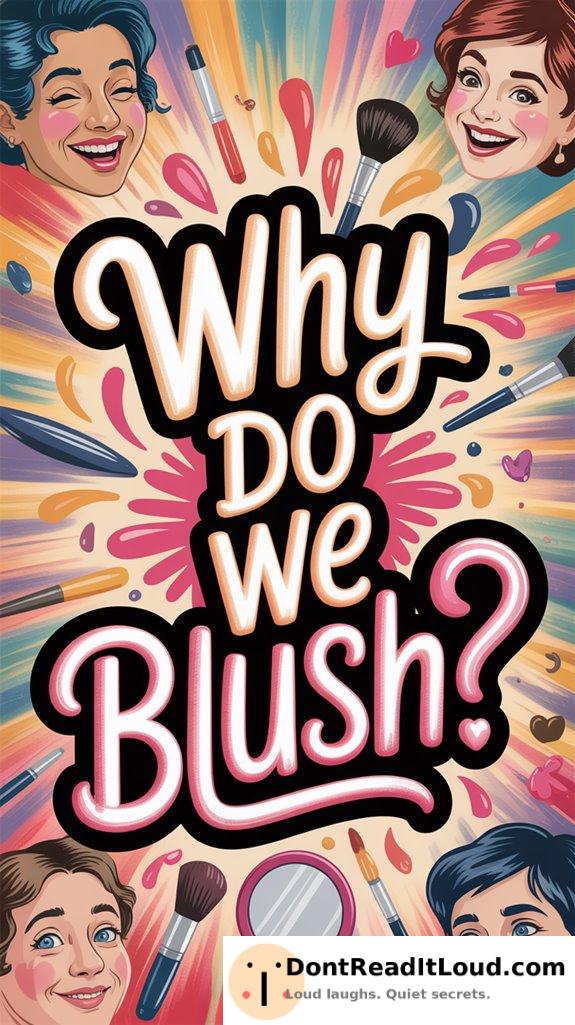
Blushing is an involuntary reaction managed by your autonomic nervous system. When you experience emotions like embarrassment or social anxiety, blood rushes to your face, causing redness. This visible change acts as a nonverbal signal to others, showing your emotional state and hinting at vulnerability. Our tendency to blush has deep evolutionary roots, influencing how we interact and communicate socially. Explore more about this intriguing bodily response.
The Physiology of Blushing
When you blush, your body reacts in a unique way. It’s like your own personal light show, powered by your autonomic nervous system. You can’t control it—just like you can’t stop your uncle from dancing at family weddings.
This system takes over during awkward moments, sending extra blood to your face. Suddenly, you turn as red as a tomato!
Blood rushes to your cheeks, making them stand out for everyone to notice. It’s your body’s way of announcing, “I’m feeling something!” even if you wish you could disappear.
Psychological Triggers of Blushing
Although blushing is a physiological response, it often stems from psychological triggers. Envision you’re at a party, and suddenly your brain decides to stage a full-on embarrassment response because you tripped over a nonexistent obstacle. Your cheeks turn beet red—classic blushing!
This reaction isn’t just your face betraying you; it’s your brain reacting to social anxiety.
When you’re worried about how others see you, your face might suddenly flush. It’s as if your internal “Oops!” button got jammed. Whether you stumble over your words or accidentally call your boss “Mom,” blushing reminds us that social situations can be awkward, but at least you know how to make an entrance!
Social Significance of Blushing
Blushing plays an important role in social interactions, serving as a nonverbal cue that reveals your emotions to those around you. It’s like nature’s way of broadcasting your embarrassment, putting your feelings on display whether you want to or not.
This involuntary reaction can highlight awkward moments, especially when a joke falls flat. Cultural attitudes toward blushing differ; some see it as a charming sign of humility, while others may view it with suspicion.
Evolutionary Perspectives on Blushing
While you might think of blushing as just an embarrassing quirk, it actually has deep evolutionary roots. Envision our ancestors steering the dating scene without speed dating apps or Instagram filters. Blushing became a useful signal, showing honesty and trustworthiness to others. It’s like nature’s way of highlighting mate appeal.
Imagine being in the Stone Age, feeling your face flush, and catching the attention of someone across the fire.
Blushing also helps you recover from social slip-ups, showing regret or apology when words aren’t enough. So next time your cheeks turn red, remember you’re taking part in a long-standing evolutionary response!
Conclusion
In exploring why you blush, you uncover a fascinating mix of physiology, psychology, and evolution. Your body reacts to emotions like embarrassment or excitement by sending blood to your cheeks. This automatic response not only has a biological function but also signals your feelings to others, strengthening social connections. As an evolutionary trait, blushing may have helped foster trust and empathy within groups. So, the next time you blush, see it as a distinctive part of being human.



